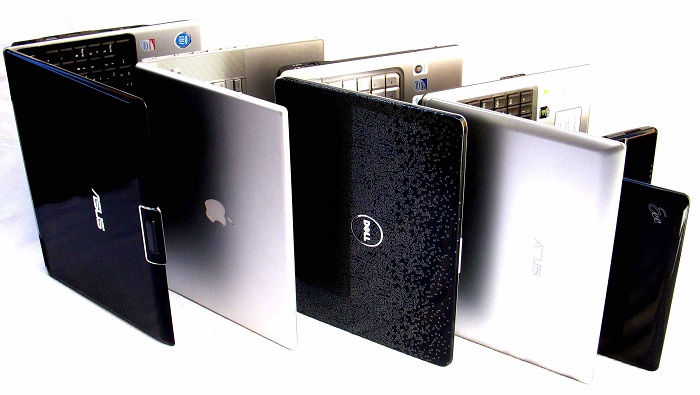
|
Our cell phones have become an essential part of our lives, and most people have at least one computer at home, but we still need a comfortable mobile work solution that is durable and will keep working for several years. You may ask yourself “But which laptop is right for me?” – That’s something only you can answer, and it’s especially harder if you don’t know what you’re looking for exactly. This article will give you a better understanding of laptop terms, parts and what kind to get for yourself, without overpaying for things you don’t need. |
 |
|
The Different Kinds of Laptops The laptop market is teeming with options, with different tiers and uses for each type. From the smallest laptops (also known as “netbooks”), through hybrid devices that combine laptop and tablet capabilities, and up to the largest kind that can replace your old desktop computer thanks to their large screens and full keyboard. All of these categories reflect just a few basic differences – screen size, weight, and performance. The laptop that’s best for you is simply the one that answers all of your needs. For most people, the ideal size is somewhere between the “regular” size and an Ultrabook (a powerful, lightweight laptop). This is usually the final consideration you should address, but address it you must. Pro tip: Don’t be tempted to buy a hybrid, even though the idea of getting both a laptop and a tablet for the price of one may be appealing, but hybrids or often heavier than regular tablets and often less powerful than ordinary laptops. The only exception is the new Microsoft Surface 3, which is the first true hybrid. Size and Weight After we’ve selected the type of laptop we need, it is time to examine the most important factors in buying a laptop. The size and weight of your device will directly affect your device’s mobility and usability. Nobody wants to carry excess weight around, but for many people, using an 11” netbook, with its tiny keyboard, is an even worse option. |
 |
|
Standard screen sizes and weight: 11-12 inches – The slimmest and lightest laptops you can find. Their weight would rarely be more than three pounds, but their keyboard is small and uncomfortable, and the screen size is very small. 13-14 inches – The most common screen size for laptops that are aimed at combining power and mobility. The screen size is suitable for most people, and the keyboard is generally comfortable enough. The average weight of these laptops will be 3-5lbs, with some that can be lighter (but often more pricey). 15 inches – This is the size of the average laptop, and, even though, their weight can reach 6lbs, they are very comfortable to use. Laptops this size often come with a DVD or Blu-Ray drive and a plethora of connection ports. 16-18 inches – Laptops this size or often marketed as desktop replacements or gaming laptops. They’re meant to remain in one spot most of the time, but the reduced mobility is compensated by increased performance, in particular, when it comes to games and working with CPU-heavy software (which most of us don’t use). These giants’ biggest downfalls are the weight (often 7lb or more), and a much lower battery life. |
 |
|
Brand and Operating System Both of these considerations are directly linked – If you buy an Apple Macbook, it’ll use Apple OS X, Non-Apple laptops will come with Microsoft Windows 8.1 or Google Chrome OS. When first introduced, Windows 8 was difficult for new users to get a hang of, but with the upgrade to windows 10, many frustrating features were fixed or improved and the current version is comfortable to get accustomed to, as it’s suitable for both touch screens, as well as keyboards and mice. Apple OS X also enjoys an easy, comfortable user interface, though people who are accustomed to Microsoft Windows might find it difficult to switch. As far as branding is concerned, we recommend that you go with a well-known brand. A laptop is an investment and an important tool, so if anything goes wrong – you would want someone to fix it, quickly. The bigger brands usually offer extended warranty for the battery, a vital part of your laptop, and often one of the first to break. If you’re not sure which brand to go with, check out Google information and reviews to be better-informed.
CPU – Central Processing Unit The CPU is the brain of the computer and affects your laptop’s weight, performance, and power consumption. At this time, the most common CPUs found in laptops are Intel’s Core i-series: i3, i5, and i7. The 7 series is overkill for anyone who doesn’t indulge in the newest computer games, so most users will prefer the 3 and 5 series. If the specification states that the CPU is a Core M, it means it’s an older model and may not be recommended. Pro tip: Intel recently launched the 5th generation of its Core i platform, giving it a considerable boost in performance and with lower power consumption. The new series is named “Broadwell” and if you want to make sure your new laptop is equipped with the newest generation, it’s easily discernable in the model number: a Core i5-3337U is a 3rd generation processor, while a Core i7-5500U is a 5th generation processor. |
 |
|
Battery Life Every laptop can be connected directly to a power socket, but that’s not why we buy them. You want a laptop with a decent-enough battery life, that’ll save you from running around and looking for a power plug just to check your emails. A laptop’s battery is comprised of several power cells, and more cells mean more power. Keeping that in mind, not all batteries are created equal, so the best way to assess which battery is better, is by comparing the wattage-hours. The higher the number – the longer your battery will hold. Given that information, it’s still hard to calculate exactly how long your battery will last, as power consumption relies on many variables – CPU, size and type of screen, graphics card, etc. A 15-inch laptop should last at least four hours in extensive use, while an ultrabook should last at least five. If you can spare some more coin, you can get laptops with seven or more operating hours. Graphics Card The graphics card is one of the most power-hungry components in desktops, but since laptops are not often used for computer games or complex video-editing software, users don’t need such powerful graphics cards. The built-in Intel Graphics cards are more than suitable for your everyday use and even the occasional game. Pro tips: If you decide to get a laptop with a screen size of 13 inches and above, it’s recommended that you check if it’s capable of playing full HD video (1920x1080) or higher. Lower resolution screens may make your laptop cheaper, but could also reduce your experience if you want to watch high definition videos. RAM Ram is the computer’s quick-access memory, and stands for Random Access Memory. It is used as faster short-term memory, allowing the computer to run software more efficiently. Quality laptops will have 4Gb of RAM, and some will even offer 8Gb, which gives the laptop a performance boost. Hard Drive (HDD) The HDD is the long-term memory of the computer. This is where all your photos, videos, documents and software are kept. So going big is always advisable. Don’t settle for anything less than 320Gb, and if you can – opt for 500Gb. If you can afford it, getting a Solid State Drive (SSD) will speed up your performance, with a minor increase in your power consumption. However, at this time, SSDs are expensive, so only get one if you truly feel like you need it. |
 |
|
Connections and Ports Finally, an aspect many people ignore is the type and number of connection in their laptop. Any decent laptop should have at least two USB ports, though four is recommended. Make sure that the USB ports are USB 3.0 – the 3rd generation of USB connections and much faster compared to its predecessors. They can be used to charge your smartphone, connect an external keyboard or mouse, external HDDs, etc. If you’re considering using your laptop for entertainment, make sure it has an HDMI port, which allows you to connect it to a television screen, allowing you to transfer high-quality sound and video. Card readers are also quite useful to have, particularly if you use one in your smartphone or digital camera/camcorder. Another aspect people ignore is the charging cable. You’re going to want to get a spare one, in case you forget the original somewhere, or if it gets damaged somehow. You don’t want to be stuck with a laptop that doesn’t work, do you? Wireless adapters (not WiFi or Bluetooth) are a feature that has been introduced in the last decade, which allows you to connect your computer to advanced screens wirelessly. While some claim that it’s nothing more than a gadget, we believe it will become commonplace in all laptops soon enough. |